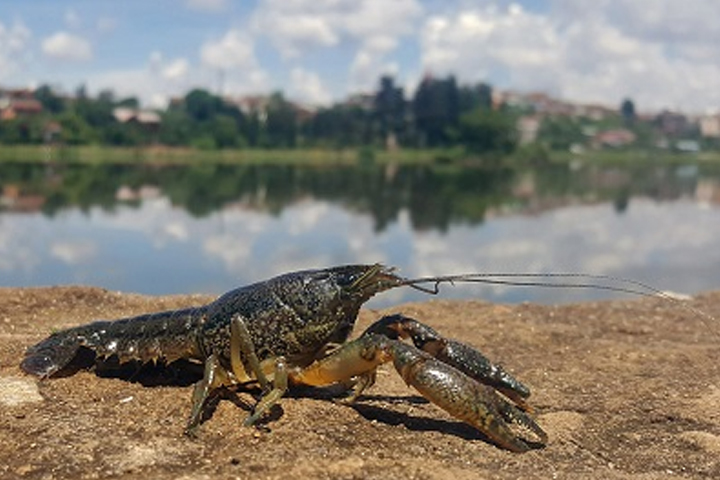What has 10 legs, mutant DNA, a voracious appetite and a cray-cray sex life?

An unnatural freak known as the marbled crayfish has taken over a cemetery in Belgium, where the suspected aquarium escapee has cloned itself into an unkillable swarm of crustacean copies.
The attack of the clones is playing out at Schoonselhof cemetery in Antwerp, according to the Flemish Institute for Nature and Woodland Research (INBO). Hundreds of crayfish have infested every pond, pool, stream and puddle in the area, destroying the natural balance and threatening other species, Antwerpe Television reports.
“It’s impossible to round up all of them,” Kevin Scheers of the INBO told the Brussels Times. “It’s like trying to empty the ocean with a thimble.”
It’s a scenario that experts have worried about for years. The super invasive crayfish species can eat just about anything, live just about anywhere and reproduce just about whenever it wants — and it don’t need no man.
The crayfish clones itself through parthenogenesis, a form of asexual reproduction. Every member of the species is female, and it lays eggs that hatch without sperm to fertilize them. Every one of its offspring is genetically identical to one another, and to the parent.
The first marbled crayfish is thought to have emerged from pet breeders in Germany in the 1990s. It’s very similar to the slough crayfish from Florida, though it’s unclear exactly how the slough gave rise to this self-cloning hybrid.

Get daily National news
The invasive species has sparked concerns in the European Union, the United States and Canada, though it’s a hard creature to stamp out of the pet trade. They grow up to 12 centimetres long and are extremely easy to care for and breed, which makes them an attractive pet for many collectors.

“Someone apparently had the animal in their aquarium, and then set it free in a canal,” Scheers told the Brussels Times.
It’s unclear when the crayfish first arrived the the cemetery, which is home to more than 1,500 graves for soldiers who died in the First and Second World Wars.
Several Canadians are among those buried at the site.
Scheers was at the cemetery last week trying to round up as many crayfish as possible.
The frustrated environmentalist had only one message for the public: don’t release your pets into public waterways. There’s no telling what damage they might do — or what chaos they might cause — outside of your fish tank.




Comments